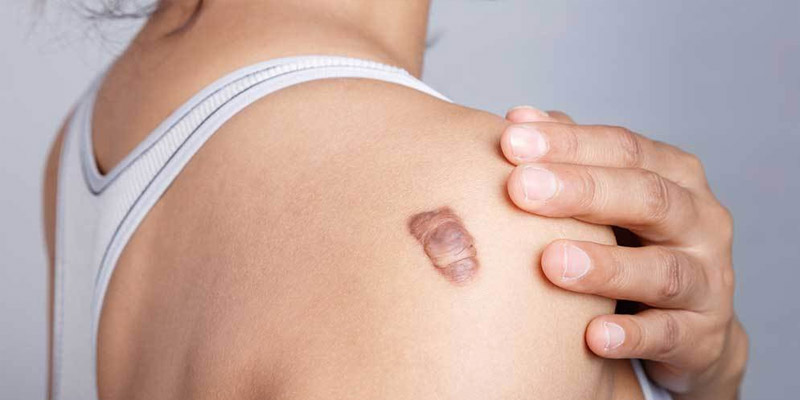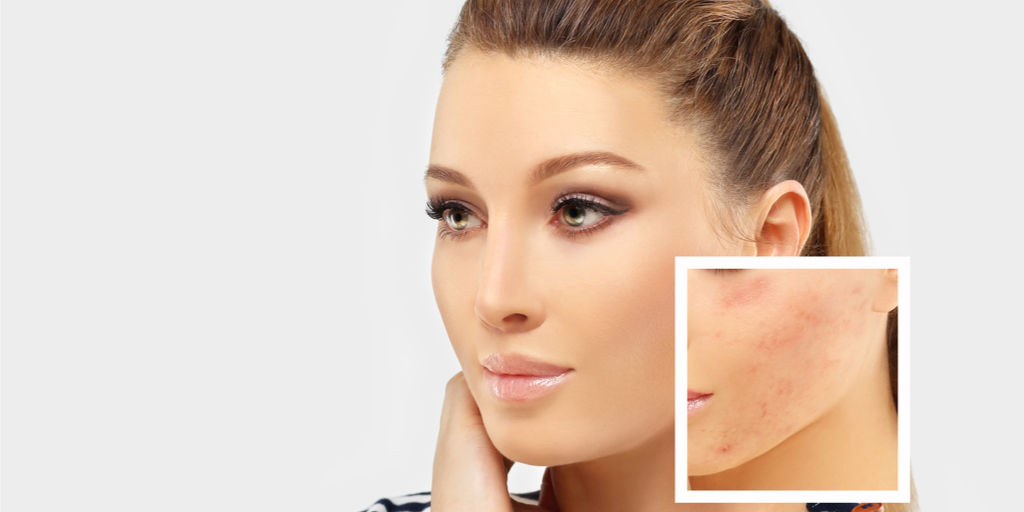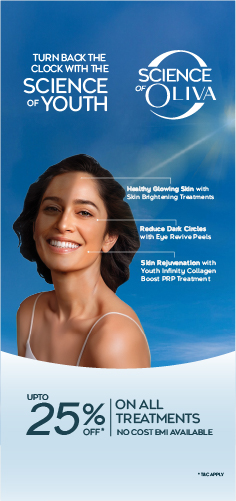In This Article
Hypertrophic Scar – Removal Treatment, Recovery And Cost
Some scars have the capability to bring back horrible memories. While the wound may eventually heal with time, the scars they leave behind tend to stay longer if not forever. The good news here is that there are efficient and powerful ways to combat these unpleasant marks and bid them goodbye. It is important to note that different scars take shape in different ways and each of them needs to be dealt with in a specific way. One such common scar is the hypertrophic scar, and this article aims at helping you distinguish it from the other kinds and guide you with the different hypertrophic scar treatment options available.
In This Article

What Is A Hypertrophic Scar?
A hypertrophic scar is formed when the body reacts unusually to a wound that reaches the dermal layers of the skin. The occurrence of this is dependent on an individual’s wound healing tendency. In this case, the body’s healing response leads to the formation of scars that are slightly thick, elevated, and are usually red in color while sometimes being itchy and painful.
A hypertrophic scar differs from other similar scars by way of its characteristic of not spreading beyond the parameters of the original wound with a tendency to stabilize and subside on its own in due course. The once elevated red scar tends to become flatter and paler with time.
Must Read: How To Flatten Hypertrophic Scars?
What Causes Hypertrophic Scars?
Hypertrophic scars, like most other scars, are caused by injury to the skin which can be due to
- Burns
- Body piercings
- Severe acne
- Cuts
- Tattoos
- Animal/insect bites
- Chickenpox
The reason behind a slight elevation in the appearance of this scar is due to an imbalance in the collagen levels at the spot of the injury. As part of the wound healing process, the skin cells can sometimes over-produce collagen to heal the skin, and this ends up leaving us with a raised scar. To elaborate on the causes, the collagen overproduction is most often seen in the presence of an infection, inflammation, unusual stress or movement at the site of injury or also when the wound is left to heal without the administration of stitches.
Must Read: How To Remove BCG/Small Pox Marks?
Keloid Vs. Hypertrophic Scars
One of the prime steps in hypertrophic scar treatment is to distinguish and ensure that the scar at hand is not actually a keloid scar which can be described as a smooth and solid non-malignant growth that is typically bigger than hypertrophic scars. Let’s take you through some of the key differences between these two scar types
- Hypertrophic scars are pinkish-red in colour whereas keloids have a reddish-purple tone to them and can be accompanied by hyperpigmentation.
- The former has an elevated appearance but does not rise more than 4mm above the skin whereas keloids can go beyond 4mm.
- Hypertrophic scars are restricted to the boundary of the original wound whereas keloids can spread beyond the original site of injury.
- The former scars become stable in size, flatten out, and tend to naturally subside with time, whereas the latter has a tendency to continue to grow and advance over time.
- A hypertrophic scar on face or nose is common, but they can develop anywhere whereas keloid scars tend to form on the upper chest, shoulders, earlobes, etc.
Must Watch: Keloid Vs. Hypertrophic Scar
Hypertrophic Scar Treatment
Like mentioned above, hypertrophic scars have a self-healing tendency where they sink down and become paler over the course of a year’s time or more. In spite of this, there can be individuals willing to undergo other treatment options to facilitate the process of scar lightening. Take a look at some of the latest invasive and non-invasive hypertrophic scar treatment options available.
-
Laser Therapy:
Laser Therapy works well to decrease the redness and thickness of the scar, provide relief from itching while causing a visible improvement in the appearance of the scar with minimal side effects. The number of sessions required differs from case to case.
-
Surgical Excision:
After the exhaustion of all the non-invasive measures, surgical removal can sometimes be the only option, especially in cases where the scar is located at a joint and is restricting movement or is causing stress in the surrounding tissue too. The surgical treatment option is not recommended for regular hypertrophic scars.
-
Topical Creams:
Topical creams/ointments containing steroids available in various concentrations can prove helpful in some cases. At the same time, intralesional corticosteroid injections (with Triamcinolone) can also be used every few weeks at the site of the injury when the signs of scarring begin to appear.
-
Silicone Gel Sheets:
Used when the scar formation is at its primitive stage, these sheets provide hydration to the wound and regulate the production of collagen, thus limiting the formation of a bad hypertrophic scar over the course of 6-12 months.
-
Pressure/Compression Therapy:
This is most suited for hypertrophic scars on the limbs and body. Applying pressure to the scarred area aids in regulating the synthesis/break down of collagen and controlling the oxygen, blood, and nutrients supply to the scar tissue thus reducing the development of the scar.
-
Radiation Therapy:
Seen as a rather aggressive option, this hypertrophic scar treatment targets the scar-causing cells in the tissue and destroys them.
-
Cryotherapy:
In this method, liquid nitrogen is used to freeze the scar tissue, thereby reducing redness and flattening it.
Must Read: Acne Scar Treatment
How Long Does Hypertrophic Scar Take To Heal?
There is no universally accepted hypertrophic treatment process that can and will work in all cases. Therefore, it is advisable to consult a well-trained and experienced dermatologist who can diagnose the condition in-depth and arrive at a suitable treatment process. In most cases, it has been observed that a combined modality therapy works wonders where an individual fails to respond to a single treatment modality. For example, steroid hypertrophic scar injections are administered following a surgical excision or silicone gel sheets are used in conjunction with a compression dressing.
Hypertrophic Scar Removal Cost
The cost of hypertrophic scar removal treatment in India is variable. Check out the following cost details to make an informed decision that suits your budget:
- Laser Therapy: Comes at a price range between Rs 7,000 to Rs 20,000 per session.
- Topical Medications: Priced between Rs 900 to Rs 7000.
- Surgical Excision Treatments: Price ranges from Rs 15,000 to Rs 25,000 per session.
DISCLAIMER:
Please note that the prices mentioned are indicative and may vary depending on the specific treatment, choice of technology, and underlying skin or hair conditions. Prices are also subject to change based on ongoing promotions or offers at the clinic. For an accurate estimate, please consult with our dermatologist.
What Is The Treatment Procedure?
- Finding A Doctor: Doing your research and finding the right doctor is crucial if none of the OTC treatment options seem to have worked for you.
- Schedule Appointment: After zeroing down on the doctor or skin clinic, schedule an appointment with them. Make sure you decide on a day/time when you are relatively free as these consultations can be time-consuming.
- Visits: After the initial consultation is complete, don’t hesitate to plan additional visits to the skin clinic if you think you need to do so, to zero down on the treatment modality.
- Process: After finalizing the treatment option most suitable for you, undergo the procedure(s) after preparing well for it with the help of all the dos and don’ts listed out to you by the doctor at the skin clinic. The number of sessions required will vary depending on the severity of your problem.
- Follow Up: These are extremely important and make sure you do not miss out on your follow up visits. A good dermatologist will always follow up with you to study your progress with the treatment.
How To Prevent Hypertrophic Scars?
Hypertrophic scar causes are plenty, as stated above, but appropriate care can help you prevent these to some extent.
- Restricting and avoiding any avoidable skin surgery can greatly bring down your chances of forming these scars.
- If the surgery is unavoidable, generous use of silicone gel sheets and required steroid injections can bring down scarring.
- In the case of burns, cold water compression and topical treatments can minimize scarring and help with healing.
- In cases of acne, chickenpox, etc., swift and timely treatments are required.
- Clean up injuries/wounds/cuts followed by dressing to avoid unnecessary infections that can sometimes lead to scars.
Takeaway
Hypertrophic scars can seem harmless but having them on a body part that is always exposed can harm your self-confidence and make you extremely conscious of it. So, do not hesitate to seek a doctor’s intervention to help you fade away these scars for good.










